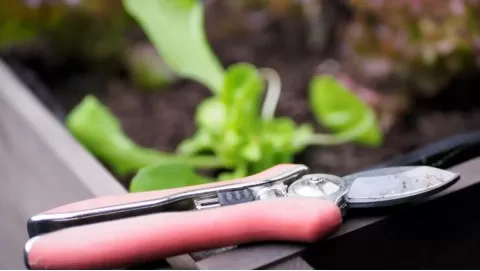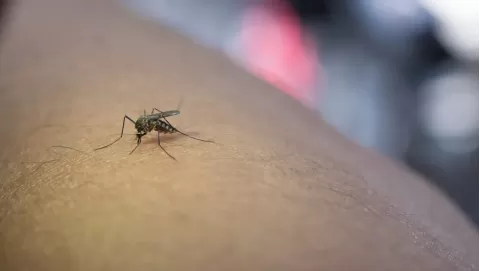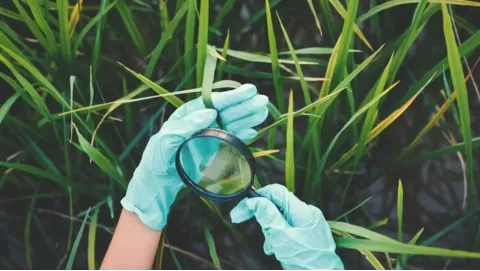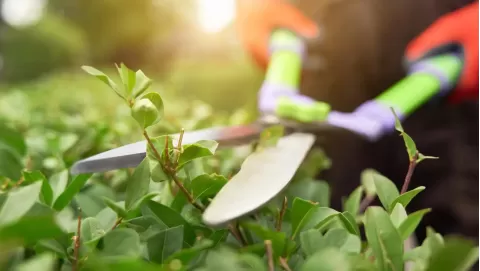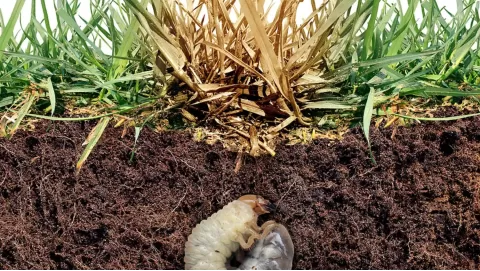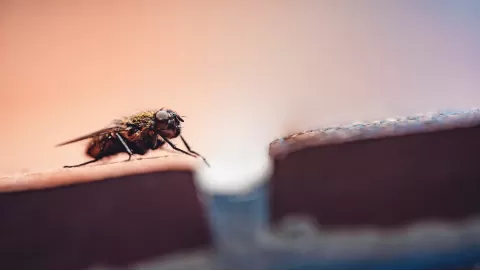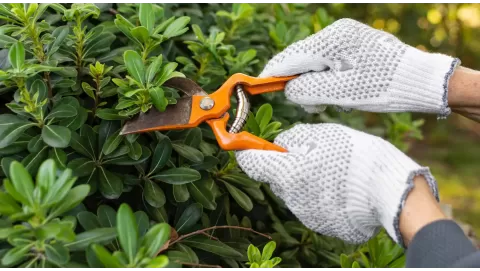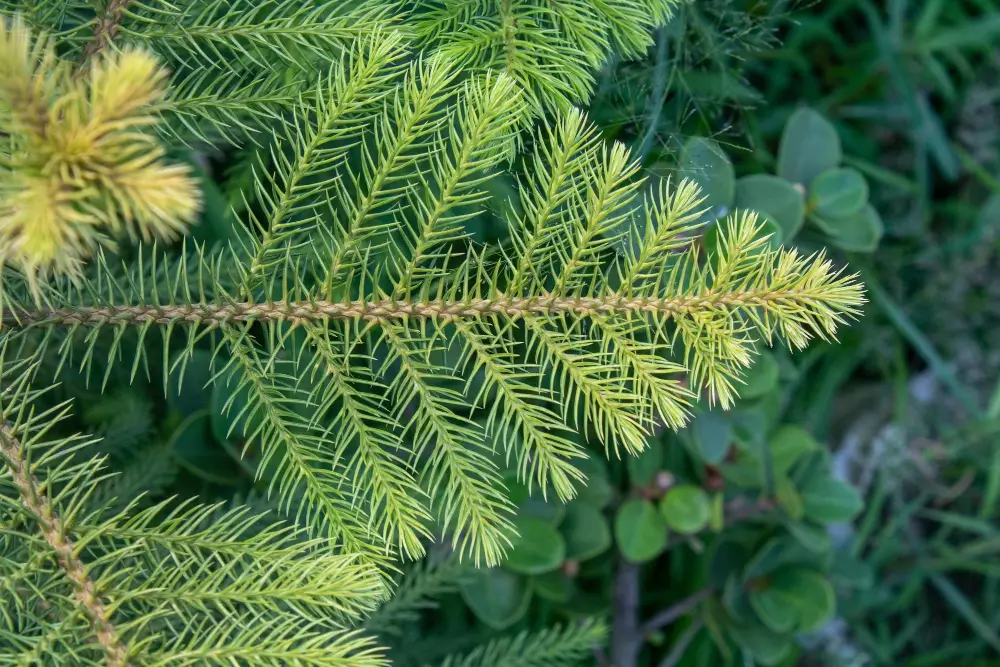
Norfolk Island Pine care: Tips for growing araucaria indoors
Araucaria heterophylla is commonly known as the Norfolk Island Pine. It is an odd but captivating plant rather than a common pine. This plant is often cultivated as a landscaping tree in typical subtropical areas of North America and attains a remarkable height of up to 2400 inches. This plant is also popular indoors, known as the Norfolk Island Pine, with a height of up to 24 to 96 inches.
Norfolk Island Pine can be easily identified through its tall, straight trunk and regular branch structure. It is abundantly dense with short and stout needles directed inward, which is why many people are fond of placing plants indoors for beautifying purposes. Because it is a slow-growing plant, it is commonly sold as a live Christmas tree. Many people like to play with this plant, decorating it with ribbons and ornaments on Christmas. However, most people get rid of it as soon as the holidays are over.
Whether kept indoors or outdoors, Norfolk Island Pines thrive in environments with plenty of light. For those who want to maintain a healthy and thriving plant, providing ample sunlight is essential to its growth. Growcycle has an enhanced variety of gardening accessories and tools, such as grow lights and pots, allowing Norfolk Island Pines to thrive even indoors.
History
The Norfolk Island Pine is a tree from the Araucariaceae family that is native to Norfolk Island, a small Pacific island. When Captain James Cook discovered the island in 1774, he noticed the tall, straight trees and thought they could be used for ship masts. However, the wood was too brittle for that purpose, but it was still used locally for building. Due to its broad popularity in the region, the plant is also known as the Australian pine.
Today, the Norfolk Island Pine is popular worldwide as an ornamental tree, especially in coastal areas, and as an indoor plant. It’s easy to care for and is often used as a living Christmas tree. On Norfolk Island, the tree is a national symbol and even appears on the island's flag. Although it’s not endangered, efforts are made to protect the natural populations on the island to ensure this ancient tree continues to thrive.
Essential Care Tips to Thrive Araucaria
Caring for a Norfolk Island Pine is relatively simple. It has a few basic needs that can be easily met. Below are the main care requirements to ensure the plant thrives.
- Light
Norfolk Island Pines are sun-loving plants that thrive in full sunlight. They should be put in an open area with enough of sunshine whenever feasible. They are, nevertheless, quite adaptable and can withstand inadequate lighting for extended periods of time, even months. This feature allows them to be kept inside during winter and then taken outside in a sunny place once it's summer.
When a plant grows straight tall and does not fill in much, it is often a sign that it is not getting enough light to thrive. This stretchy or leggy aspect of the plant usually results from low light combined with too much fertilizer application. Under these conditions, it is generally better to suspend fertilizers until the plants are healthier and more sunlight will be plentiful.
- Soil
Norfolk Island Pines usually do best when planted in rich, sandy soil with some degree of acidity. These tree plants do not do well in alkaline soils since the ideal soil pH level lies somewhere between 4.5 and 5.5. By keeping the soil well-drained and replenishing the soil nutrients, the establishment and healthy growth of the plant will be quite easy.
With a simple soil test kit, one can ensure that the Norfolk Island Pine has the correct amount of acidity by testing the soil periodically. At intervals when the soil pH is within the range considered acceptable for the plant’s active growth, chances are high that long-term health for the tree will be attained.
- Water
Norfolk Island Pines need regular watering to stay healthy. Watering after a week or two is more than sufficient while growing indoors. Watering should also be adequate so that surplus water drains from the pot's bottom. This ensures the roots are properly moistened.
Placing a Norfolk Island Pine outdoors may require careful watering. The soil might not retain enough moisture, so growers must water it, especially during dry seasons. However, be cautious not to overwater, as constantly wet soil can lead to root diseases.
- Temperature and Humidity
Norfolk Island Pines can grow in warm and moist conditions with a temperature range between 65 and 70° F. This approach allows people to keep the plants indoors, where they can thrive and stay healthy. While the plants can handle brief periods of low and high temperatures, exposure to temperatures below 35° F can cause severe damage or even kill them. That's why avoiding taking them outside during cold weather is important.
Humidity is another key factor in Norfolk Island Pine care. Since these plants naturally grow in moist environments, indoor air can become quite dry, especially in winter. To keep the air around the plant humid, gardeners can use a humidifier, which helps prevent the leaves from drying out or turning brown. Another option is to mist the plant occasionally or place a small tray of water nearby to increase the humidity level.
- Fertilizer
When growing a Norfolk Island Pine tree, feeding it frequently is very critical. In the growing season, applying a diluted liquid fertilizer is advisable. A balanced 20-20-20 NPK (Nitrogen, Phosphorus, and Potassium) formulation works well. Still, one can also choose fertilizers specifically designed for conifers or azaleas to provide the extra acidity that Norfolk Island Pines prefer.
Fertilizing should be done throughout the active growing season, but it's a good idea to pause during low-light periods, such as in winter when the plant's growth slows down. This helps to avoid excessive fertilization, which can be damaging to the plant.
Types of Norfolk Island Pine
Here’s some key information about the different types of Norfolk Island Pines that is important for their care:
- Main Variety
Only one main variety of Norfolk Island pines is available in the market: Araucaria heterophylla. This is the most used plant, both indoors and outdoors. Unlike many other plants, the Norfolk Island Pine lacks named ornamental cultivars or varieties.
- Other Species
Occasionally, people might come across other species from the same family, like A. columnaris, A. araucana, or A. bidwillii, which are sometimes mislabeled as Norfolk Island Pines. Though these species are less common, their care needs are similar to those of Araucaria heterophylla. If people have one of these varieties, they can follow the same care guidelines to keep it healthy.
Techniques for Growing Araucaria Fast
Here are some useful methods that will be helpful to you on how to grow Norfolk Island Pine fast:
Pruning
Pruning is essential to the care of Norfolk Island Pines but must be done with caution. If you’re growing indoors, you may accept that lower branches will naturally die off slowly. Such branches should be pruned to maintain the cosmetic and perhaps the health of the plant. However, topping the tree is generally not recommended.
If the tree has grown so much that it has outgrown its space and become too big for its pot, the main growing tip on the top of the tree can be removed. This creates space for the tree to grow out of this part (although be warned, it will dramatically alter how your plant looks in its familiar solid green shape).
Outdoor versions of these trees don't require regular pruning beyond taking out any dead or diseased branches. This allows the tree to be healthy and avoid possible issues. If the tree is maintained regularly, it will last a long time without needing corrective activities.
Potting and Repotting
The correct potting and repotting process is vital to maintaining a healthy Norfolk Island pine. The plant needs repotting when it becomes root-bound, which happens when roots start poking through the drainage holes, or when it outgrows its pot. You’ll generally only need to repot young, slower-growing Norfolk Island Pines every other year. But, as the plant grows and starts growing faster, you may have to repot it more often.
The ideal time of year to repot a Norfolk Island Pine is spring. When selecting a new pot, choose one just a few inches larger than the existing pot so you’re not left with too much soil, which can stunt growth. Also, be certain that the new pot has ample drainage holes at the bottom.
For heavy, large Norfolk Island Pines, use a pot heavy enough to stabilize the plant. The plant can also be weighted down by adding some potting sand or other heavy material to the mix for gardeners. The soil should be a mixture of peat and sand, and the materials should be acidic as well. This type of mix is good for the plant: It provides the proper amount of moisture and drains well.
Growing from Seed
The best method of propagating Norfolk Island Pine is from seed:
First, the seeds should be sown on completely moist germination substrate (peat/sand mixture). Do not plant the seeds into the soil. Instead, use a spray bottle to lightly mist the surface of the top of the seed or cover the seeds with a piece of plastic to keep the moisture in and the seeds from sprouting.
Seeds need to be combined with light, so bright but indirect light is best. If growing outdoors, opt for a spot with partial sun and only three to four hours of direct sunlight a day. You will see both a tap root and top growth as the seeds sprout.
Provide plenty of water to maintain soil moisture, but do not overwater and make the soil waterlogged. It is very critical for healthy seedling growth to keep the right amount of moisture. Given adequate light, water, and warmth, strong, healthy Norfolk Island pine seedlings will grow from the seeds.
Benefits of Norfolk Island Pine
The Norfolk Island Pine provides several noteworthy benefits. It brings a touch of beauty to wherever it is, and its practical applications make your surroundings better.
- Space Saving
If you are short of space, consider the Norfolk Island Pine. This plant grows tall instead of wide, so it’s great if you’re tight on space (in a small apartment or on a crowded office desk). It uses vertical space, introducing a bit of green without taking up much room.
- Stress Relieving
Not only can a Norfolk Island Pine in the room lower stress levels. It does more than just providing aesthetics, as this plant also contributes to creating an environment that fosters concentration and productivity. It fits easily in one’s home or office and contributes to a happier feeling in a more organic manner.
Pest & Disease Management
Various pests and plant diseases can attack Norfolk Island Pines. Some of the pests are mites, mealybugs, whiteflies, soft scales, and aphids. It’s crucial that these infestations be caught and addressed early. When it comes to pest problems, opt for the least toxic solutions so they don't injure the plant or the environment.
Norfolk Island Pines, however, are not only pest-prone plants but also sick plants. The prominent cause of fungi on a plant is overwatering. One such disease is anthracnose: brown spots on foliage, or elsewhere, that can eventually kill the plant.
To prevent these problems and to prevent too much moisture at the base of the plant for extended periods, provide good air circulation around it. If you maintain a timely schedule of inspecting the plant for any defects and correcting them, the Norfolk Island Pine will be prevented from getting any such ailments and will also grow better.
Common Problems and Solutions
Here are a few major things to watch out for in order to take care of your Norfolk Island Pine correctly:
- Brown Needles
Brown needles on a Norfolk Island Pine are usually an indication of environmental stress. They usually indicate that the environmental conditions are bad. This tree is not particularly okay in extreme cold and very hot temperatures. Brown. The needles could turn brown due to fluctuations in temperature. Brown needles may also be a symptom of irrigation issues. This failure can be induced by too much or too little water. These issues can be prevented to a certain extent by controlling the temperature and humidity.
- Yellow Needles
The response to the exposure areas is the most significant factor causing the needle leaves to be yellow. The tree could have insufficient sun, or it could have too much sun without interruption. Wide temperatures are a key reason for the yellowish color of the leaf needles. This issue can be improved by adjusting light intensity and temperature.
- Needles Dropping
If the tree sheds needles, it is possibly overwatered, or it needs more light. Too much water causes root issues that can result in needle drop, while too little light stresses the plant and can also lead to needles falling off. When it comes to preventing needle drop, make sure your tree receives proper watering and is exposed to plenty of natural light.
FAQ’s
Can people use Norfolk Pine as a holiday tree?
Yes, you can keep your Norfolk Island Pine as a holiday tree! With its beautiful shape and green leaves, it also makes an impressive decoration. Stick with lightweight ornaments to prevent putting too much of a burden on its slender, weak branches so that the tree will stay as healthy, green and socially acceptable as possible after the holidays.
Is Norfolk Island Pine pet-friendly?
The Norfolk Island Pine (Araucaria heterophylla) is commonly regarded as safe for pets and is included in the safe plant group. This is good news for growers who don’t want to have to worry about its toxicity to pets. That said, keep an eye on pets and discourage them from chewing on the plant. Growers can prevent the problem and protect both at the same time by monitoring everything from pets to plants.
What is the best environment for a Norfolk Island Pine?
Norfolk Island pines like bright, indirect light and temperatures of 65°F to 75°F with high humidity (run a humidifier near your tree, or mist it frequently). Keep the soil moist, but be cautious not to over-water it and ensure proper drainage. Avoid overwatering.
The Bottom Line
Norfolk Island Pine Care When you want to bring the tropics indoors, the Norfolk Island pine is for you. Given the proper light, water, humidity, soil, and temperature, this graceful plant can be grown indoors and light up a room. Whether you keep it in a pot year-round or bring it outside in the summer, these care tips will ensure it stays healthy.
Growcycle has the appropriate fertilizers, grow lights, and pots to keep indoor plants in the best possible condition. Explore their garden products to treat the Norfolk Island Pine and see how well it flourishes all year round.
Disclaimer: This material is for informational purposes only and should not be relied on for legal, medical, financial, or any other form of professional advice.







